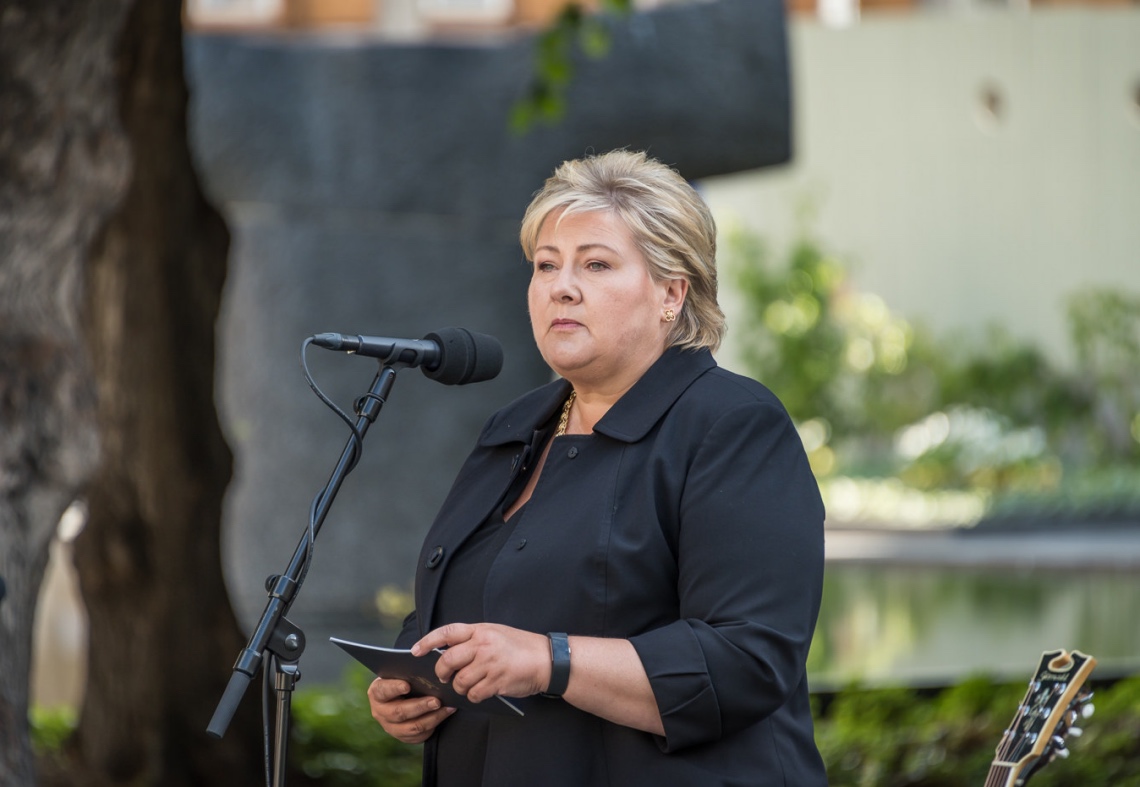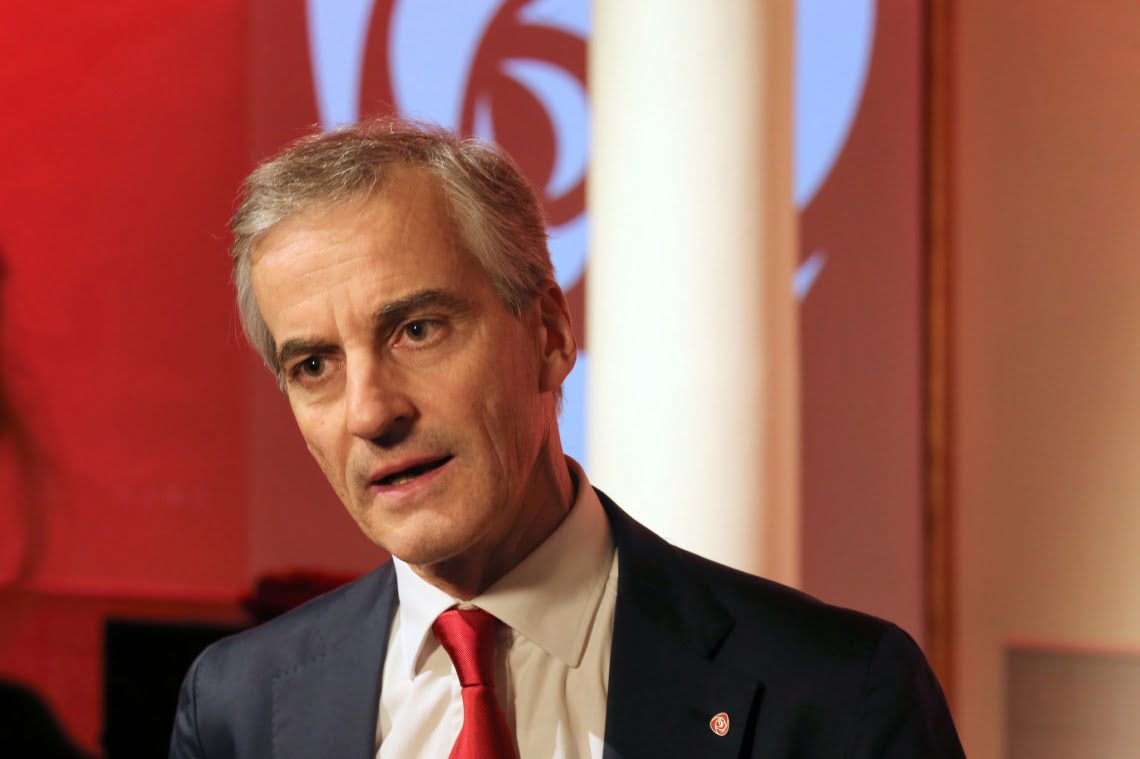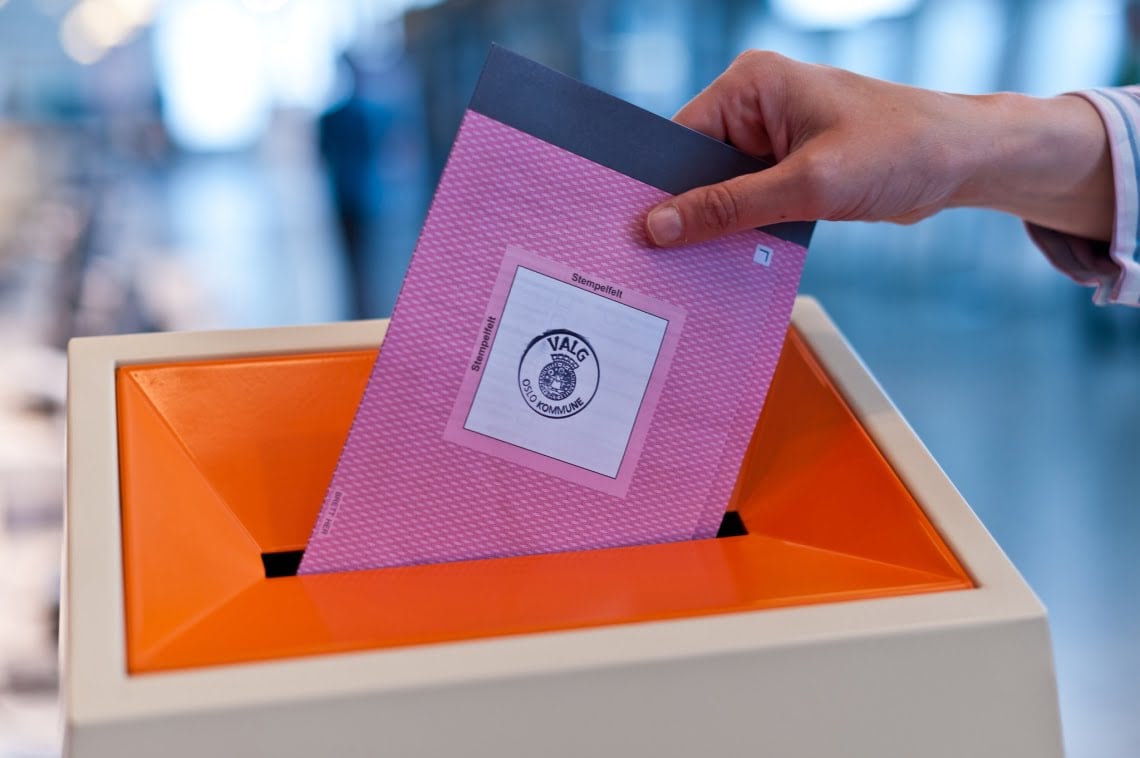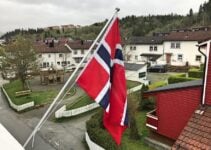
Norwegian Prime Minister Erna Solberg and her centre-right bloc is set to continue leading Norway, after a disasterous election performance from the Labour Party.
Norway's Labour Party (Arbeiderpartiet) suffered their worst election night for 16 years as they lost votes in their battle to take down the governing right-leaning bloc in the Norwegian General Election. Although they remain the largest party, Arbeiderpartiet lost more than 3% of the popular vote.
With 5% of the vote still to be counted, Prime Minister Erna Solberg's Conservatives (Høyre) and the Progress Party (FrP), together with their allies the Christian Democrats (KRF) and the Liberals (Venstre) were together projected to win 89 seats, more than the 85 required to command a majority in Norway's Parliament, albeit significantly down on their total of 96 from 2013.
Update: The Norwegian Election: What Happens Now?
A tight race
The evening was far more nail-biting than the final count suggests. Because of a quirk of the Norwegian electoral system, only 150 of the 169 seats are based on the proportion of votes gained. The additional seats are divided up between smaller parties that get at least 4% of the vote, to help remove the bias against smaller parties within the electoral system.
With the two smaller parties that had supported the two ruling parties – KRF and Venstre – hovering around 4% for much of the night, the projections were flipping back-and-forth for hours. It was only once the results from Bergen came in just after midnight that some more certainty was put in the projections.
All that remains now is for the four centre-right parties to come to an agreement. Høyre and FrP could continue with support from KRF and Venstre as before, although a more formal agreement between at least three parties seems more likely this time given the maths involved. Long-term foreign citizens will be watching events closely, as although the current coalition has tightened immigration rules, Høyre backed dual citizenship in the run-up to the election.
Winners and losers
There's no doubt about the night's biggest loser. Jonas Gahr Støre was charged with leading Arbeiderpartiet back to government but instead he lost ground, something that shocked many observers both inside and outside Norway.
Although the centre-left bloc closed the gap on the current government, this was because of the strong showing of the smaller parties. Støre remains defiant at the time of writing, but surely he can't continue.
The big winners were the agrarian Centre party (Senterpartiet), who are projected to jump from 10 to 18 seats. The Socialist Left (Sosialistisk Venstreparti), the Green party (Miljøpartiet de Grønne), and Red (Rødt) all gained ground, Rødt even winning a seat in Parliament, but the Greens failed to reach the 4% threshold to gain significant seats in Parliament. It should also be noted that the most right-leaning member of the current coalition, FrP, also held up well and are projected to lose just one seat.

Opinion polls had predicted a tight race
This has been a fascinating election campaign for one reason. The opinion polls, usually a reliable indicator of whether a left-leaning or right-leaning coalition will take charge after the election, have been all over the place. As recently as July, I wrote that the Labour party (Arbeiderpartiet) had a commanding lead in the polls, but the party of incumbent Prime Minister Erna Solberg has since come back strongly.
In the weeks leading up to the election, both major parties had been out in front with different pollsters, with the ratings of the smaller parties most likely to act as ‘kingmakers' also varying considerably. There's an important psychological impact when an election is closely contested, and I'm sure political analysts will pore over the details in the months to come.
The shift in 2013
The last General Election in 2013 saw a change of Government from a left-leaning coalition to a centre-right coalition, led by Erna Solberg's Høyre, the Norwegian conservative party. Arbeiderpartiet won the most seats but were unable to form a government as they and their coalition partners all lost seats. It was quite the shift away from the centre-left dominated coalition from 2005 to 2013.
With seven or eight parties usually winning a share of the 169 parliamentary seats on offer, coalitions are the norm in Norwegian politics, and are usually led by the main parties of the left or the centre-right, with support – formal or informal – from as many as three other parties from similar points on the political spectrum. Typically the result is a centre-left or centre-right leaning government.
The local elections in 2015 gave some pointers that the population was moving back to the left, but over the last couple years Norway's economic performance has surprised many, making this election a real contest.
Counting by hand

To combat the risk of hacking, Norway has changed its counting methods for this election, relying more on manual counting than technology. Although there have been no indications that any interference had been attempted in the past, the Government said in a statement that, “there is increasing activity and attention, both domestically and internationally, around some of the technical solutions in place. This is in and of itself a source of elevated risk.”
All municipalities had to count the votes manually once polling was completed, which means small compact municipalities such as in the cities were quick to declare, compared to more rural municipalities where the ballot boxes were spread over a much wider area. After the counting process was completed, the ballot papers were securely stored in case of a recount.
Update: The Norwegian Election: What Happens Now?
—
Photo credits: Kommunal- og moderniseringsdepartementet, Arbeiderpartiet





I believe Norway is in good hands with PM Erna Solberg and her coalition partners…i woudn`t be too worried if I was a dissapointed leftwing supporter , there are still many seats in parliament for them and their voices to be heard…
Pffft. I see signs of USA type capitalism and greed infecting Norway. Going down the privatization road is a slippery slope. Be careful what you ask for. I would not have voted for Solberg. Labor Parti doesn’t seem much better.